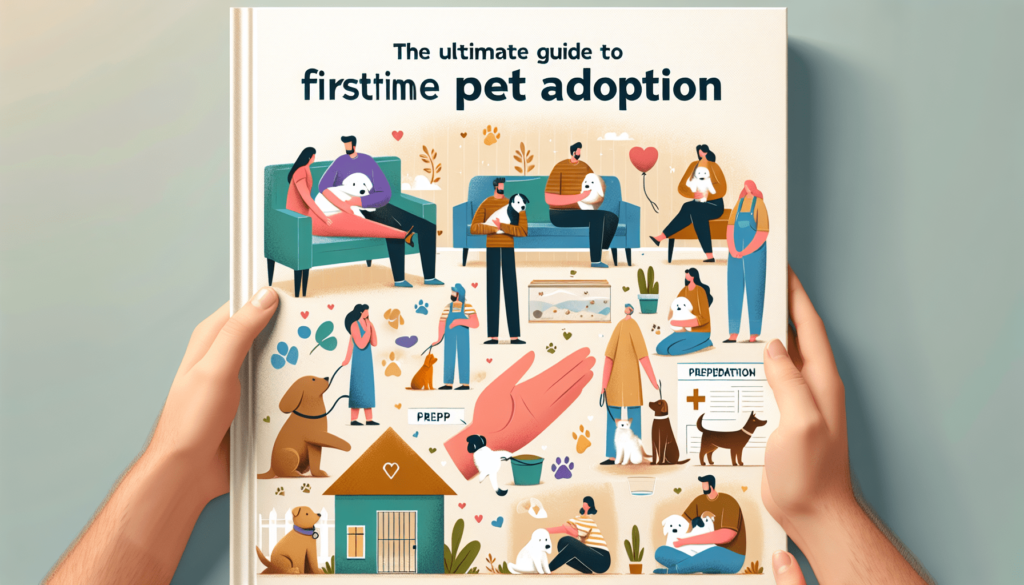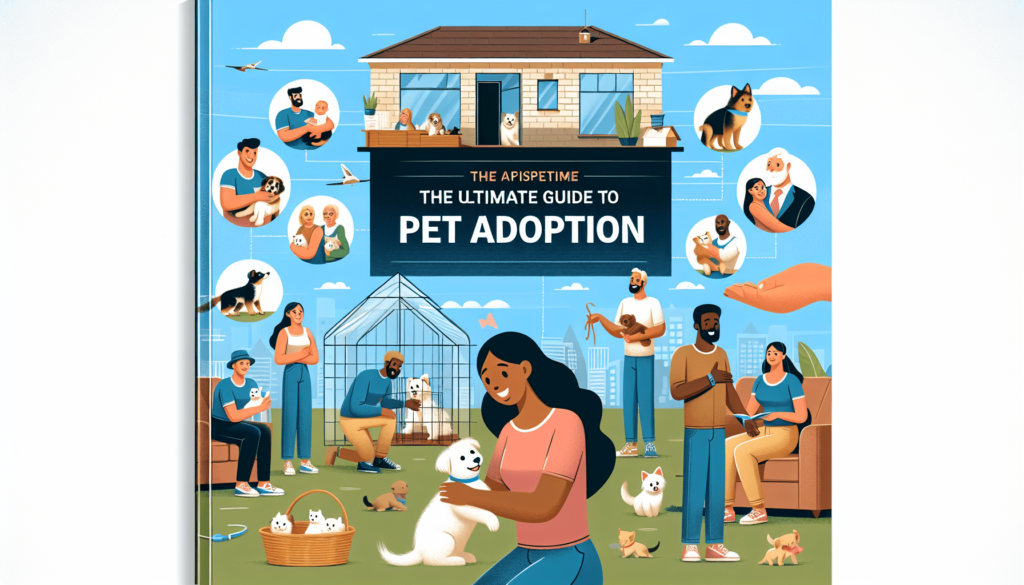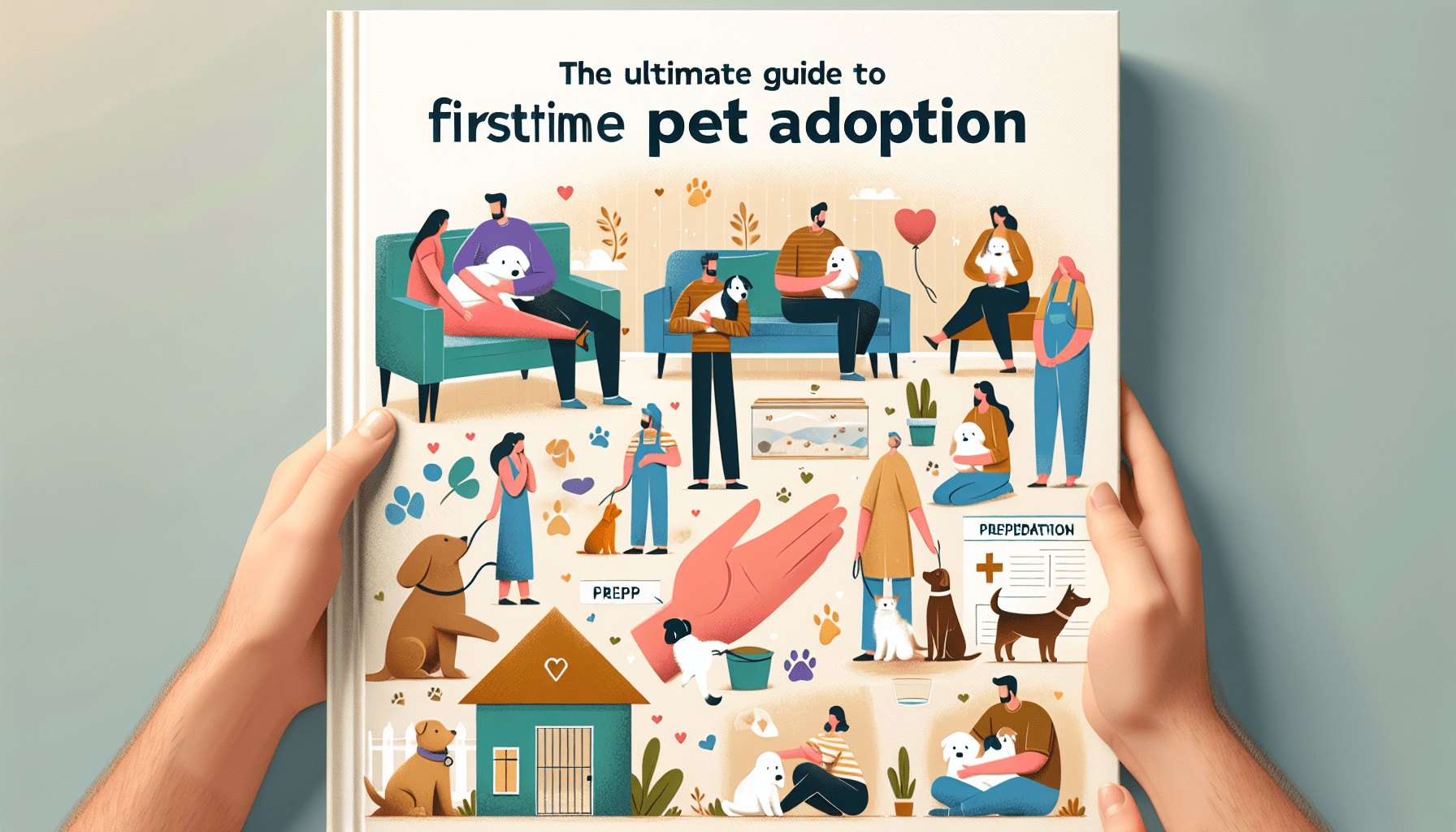You’ve always dreamed of having a furry friend to come home to, and now the time has finally come for you to adopt a pet. But where do you begin? Enter “The Ultimate Guide to First-Time Pet Adoption.” This comprehensive guide will walk you through everything you need to know about bringing a new pet into your life, from choosing the right type of pet for your lifestyle to preparing your home for their arrival. Whether you’re considering adopting a dog, cat, or even a smaller critter like a rabbit or guinea pig, this guide will provide you with all the tips, tricks, and advice you need to make the adoption process a breeze. So get ready to embark on this exciting journey and find your perfect companion.

Researching Different Pet Options
When considering getting a pet, it is important to start by researching your options. Take some time to consider your lifestyle and how a pet would fit into it. Think about factors such as your work schedule, living situation, and family dynamics. It’s crucial to choose a pet that is well-suited to your lifestyle in order to ensure a happy and harmonious relationship between you and your new furry friend.
Once you have an idea of the type of pet that would be a good fit for you, it’s time to decide on the specific breed or species. Different pets have different needs and temperaments, so it’s important to do your homework before making a decision. Consider factors such as exercise requirements, grooming needs, and potential health issues. By researching different breeds or species, you can make an informed choice and find a pet that will be a great addition to your family.
Preparing Your Home for a Pet
Before bringing a pet into your home, it’s essential to make sure that your space is safe and secure for them. Take some time to evaluate potential hazards and make any necessary changes. This may include securing loose wires, removing toxic plants, and ensuring that any chemicals or cleaning products are safely stored away.
In addition to making your home safe, it’s also a good idea to designate specific areas for your pet. This will help them feel more comfortable and provide them with a sense of their own space. Create an area for them to sleep, eat, and play. This can be as simple as setting up a cozy bed and placing their food and water bowls in a convenient spot.
Don’t forget to stock up on essentials before bringing your new pet home. Make sure you have all the necessary supplies such as food, water bowls, litter boxes, toys, and grooming tools. Having everything ready and waiting will help your pet settle in quickly and comfortably.
Understanding the Responsibilities
Owning a pet is a big responsibility and requires a significant time commitment. Before bringing a pet into your life, it’s important to consider whether you have the time to properly care for and spend quality time with them. Dogs, for example, require daily walks and exercise, while cats may need interactive playtime. Think about your daily routine and how a pet would fit into it.
Financial obligations are another aspect to consider when getting a pet. Pets require regular veterinary care, vaccinations, and preventative treatments for fleas and ticks. There will also be ongoing costs for food, toys, grooming, and potentially pet insurance. Take the time to evaluate your budget and ensure that you can afford the financial responsibilities that come with being a pet owner.
Healthcare needs are another important aspect to consider when getting a pet. Different pets have different healthcare requirements, so it’s essential to educate yourself on what your chosen pet will need. Make sure you have access to a reputable veterinarian who can provide routine check-ups and any necessary medical care.
Finding a Reputable Shelter or Rescue Organization
If you have decided to adopt a pet rather than buying one from a breeder or pet store, it’s important to find a reputable shelter or rescue organization. Start by asking for recommendations from friends, family, or local animal advocacy groups. People who have adopted pets in the past can provide valuable insights and guidance.
Check online directories for shelters and rescue organizations in your area. Many shelters have websites and social media pages where you can learn more about them and the pets they have available for adoption. Read reviews and testimonials from other adopters to get a sense of the organization’s reputation and the experience you can expect.
Visiting the shelter or rescue in person is an important step in the adoption process. This will give you the opportunity to meet the animals and assess the organization’s facilities and practices. Take note of the overall cleanliness and condition of the shelter, as well as the demeanor and behavior of the animals. A reputable shelter will prioritize the well-being of their animals and ensure that they are properly cared for.

Assessing the Pet’s Temperament and Compatibility
When visiting a shelter or rescue, it’s important to take the time to observe the behavior of the pet you are interested in. Pay attention to how they interact with other animals and people, and if they display any signs of fear, aggression, or anxiety. Behavioral issues can be a sign of past trauma or a lack of socialization, so it’s important to be aware of any potential challenges.
Consider your family dynamics when choosing a pet. If you have young children or other pets, it’s crucial to find a pet that will be compatible with your existing family members. Some pets may not tolerate the energy and unpredictability of young children, while others may not get along well with other animals. Discuss your specific situation with the shelter staff and ask for their expertise in finding the right match.
Consulting with the shelter staff is an excellent opportunity to gather more information about the pet you’re interested in. They can provide insights into the pet’s history, behavior, and any special needs they may have. Be open and honest about your expectations and concerns, as they will be able to help guide you in making the best decision for both you and the pet.
Completing the Adoption Process
Once you have found the perfect pet, it’s time to complete the adoption process. Each shelter or rescue organization will have their own specific requirements, so it’s important to familiarize yourself with their procedures.
Understand the adoption requirements, which may include filling out an application, providing personal references, and possibly a home visit. These measures are in place to ensure that the pet will be going to a loving and responsible home. Be prepared to answer questions about your previous experience with pets, your lifestyle, and your plans for caring for the pet.
Fill out any necessary forms accurately and honestly. This may include an adoption contract that outlines your legal responsibilities as a pet owner. Take the time to read through these documents carefully and ask any questions you may have before signing.
Don’t forget to pay the adoption fees. These fees help to cover the costs of caring for the animals and preparing them for adoption. The amount will vary depending on the organization and the specific pet you are adopting. Be prepared to provide payment, whether it’s in the form of cash, check, or credit card.
Preparing for Your New Pet’s Arrival
Before bringing your new pet home, there are a few final steps to take to ensure their transition is as smooth as possible. First, make sure you have all the necessary supplies. This includes food, water bowls, litter boxes, toys, bedding, and any other items specific to your chosen pet. Having everything prepared in advance will make the arrival of your new pet much less stressful.
Set up a comfortable space for your pet. This can be a designated area in your home or a specific room. Provide a cozy bed, toys, and any other comforts that will help your pet feel safe and secure. It’s also a good idea to have a crate or carrier for transportation purposes and for times when your pet may need to be confined, such as during house training.
Introduce your new pet to their new environment gradually. Allow them to explore and become familiar with their surroundings at their own pace. Provide plenty of positive reinforcement and rewards to help them feel comfortable and confident. Keep in mind that it may take time for your pet to adjust, so be patient and understanding during this process.
Establishing a Routine
Establishing a routine is essential for both you and your pet. This will help them feel secure and provide them with a sense of predictability. Start by establishing a feeding and exercise schedule. This will help regulate their digestion and energy levels. Consistency is key, so try to stick to the same times each day.
Training and socialization are also important aspects of establishing a routine. Take the time to teach your pet basic commands and ensure they are familiar with proper behavior in different situations. Socialize them with other animals and people to help them become well-rounded and confident.
Create a relaxing environment for your pet. Provide a quiet place where they can retreat to when they need some alone time. Consider using calming pheromone diffusers or playing soft music to create a soothing atmosphere. Creating a peaceful environment will help reduce stress and promote overall well-being for your pet.
Maintaining Your Pet’s Health and Wellness
To ensure that your pet stays happy and healthy, it’s important to prioritize their healthcare needs. Schedule regular veterinary check-ups to monitor their overall health and address any potential issues early on. Vaccinations, preventative treatments, and routine examinations are all essential for maintaining your pet’s well-being.
Proper nutrition is another crucial aspect of maintaining your pet’s health. Consult with your veterinarian to determine the best diet for your pet based on their age, breed, and any specific health conditions they may have. Choose high-quality, nutritionally balanced food and provide fresh water at all times.
Regular exercise is important for your pet’s physical and mental well-being. Different pets have different exercise requirements, so make sure to provide them with enough activity to burn off energy and stimulate their minds. This could include daily walks, play sessions, or interactive toys.
Building a Relationship with Your Pet
Building a strong and loving relationship with your pet takes time and effort. Give your pet time to adjust to their new home and build trust with you. Be patient and understanding as they acclimate to their new environment.
Showing consistent love and care is crucial in developing a strong bond with your pet. Provide plenty of affection, praise, and rewards to reinforce positive behavior. Make sure they have ample opportunities for play and exercise, as these activities help build a sense of companionship and trust.
Spend quality time together. Whether it’s going for walks, cuddling on the couch, or engaging in interactive play, spending time with your pet strengthens your emotional connection. Regularly set aside dedicated time to engage in activities that both you and your pet enjoy.
Adopting a pet is a big responsibility, but it can also be extremely rewarding. By taking the time to research, prepare, and understand the responsibilities involved, you are setting yourself and your new pet up for a successful relationship. With patience, love, and care, you will build a lifelong bond with your furry companion.

